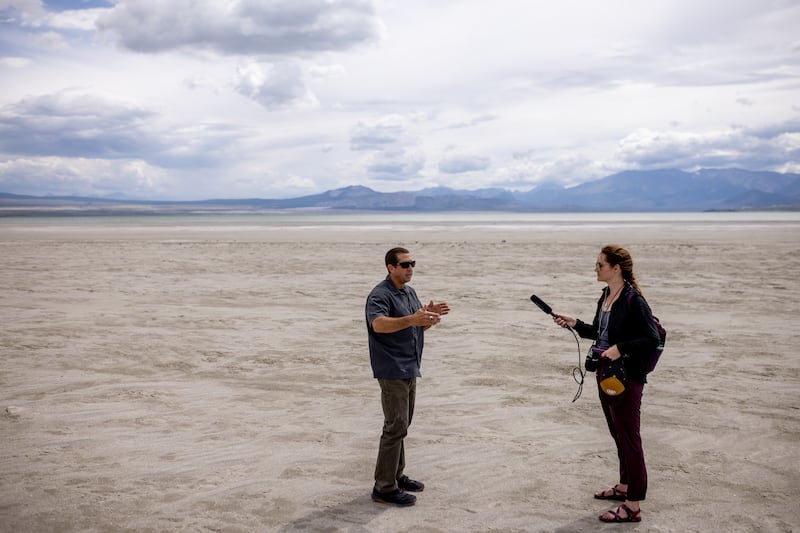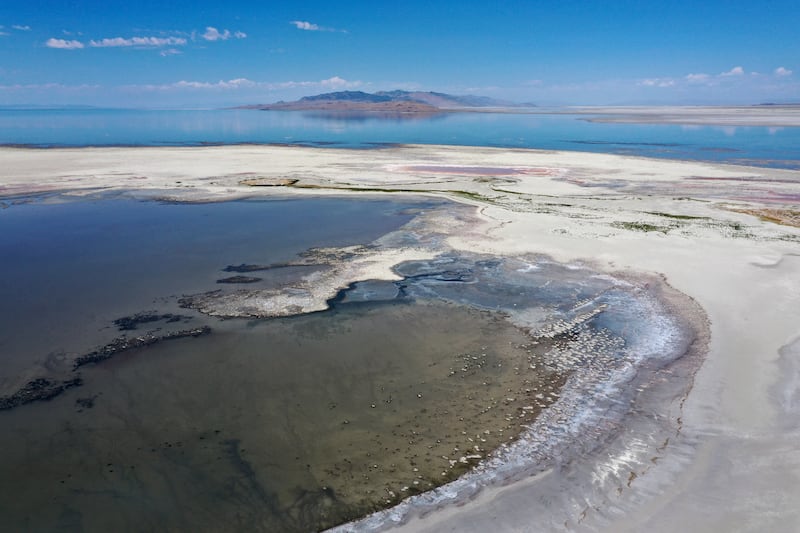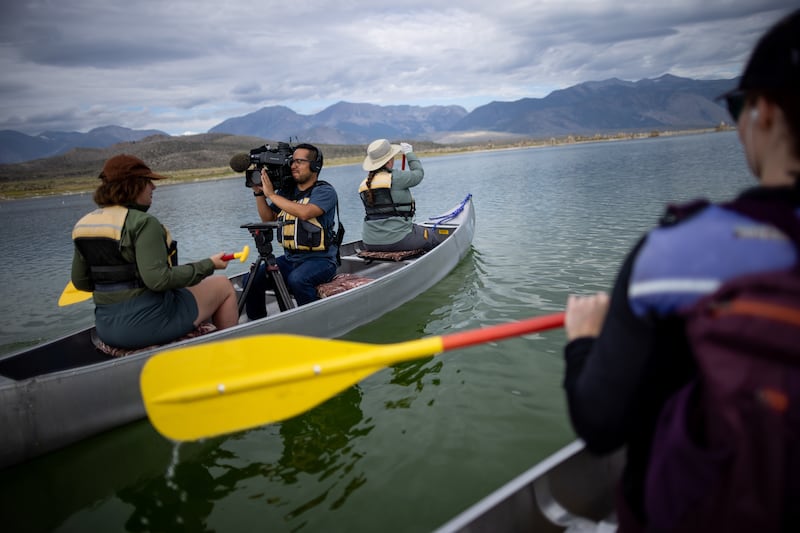Do you feel like you’ve read/seen/heard more news about the Great Salt Lake in the past several months than you have in, like, years?
You’re not wrong.
It’s been about 10 months since a group of news outlets, educators, experts and community organizations — 23 strong — boarded a fairly unprecedented ship, working together to report on the lake. Together and with the support of the Solutions Journalism Network, we’ve shared more than 150 stories, led tours of the lake, compiled an anthology of lake-inspired literature and hosted community conversations.
You know all about the problems Utah faces as the Great Salt Lake flounders, leaving toxic dust under a thin layer of dried lakebed as the water retreats.
Dangerous air quality. Collapse of industry. Suffering species. Disrupted environments.
But more than that, we want to report on ways to help.
Solutions.
Like the conservation successes in Nevada, reported by Fox 13 News’ Ben Winslow and Utah Public Radio’s Sheri Quinn. Tagline: “Solutions found for Great Salt Lake in Sin City? What happens in Vegas shouldn’t stay in Vegas.”
Or the compelling and comprehensive stories born from a joint reporting trip by the Deseret News, the Salt Lake Tribune and Fox 13 News to California, looking at the stumbles and solutions at that state’s own saline lakes, Mono and Owens (or the dry, dusty lakebed where Owens Lake used to be).

Those stories were published and aired by collaborative partners, including here on Deseret.com, for a wide range of audiences to learn from.
So, what do we hope happens now?
We want readers/viewers/listeners of our different outlets to feel hope that the Great Salt Lake can be restored to health, not just long enough to avert disaster but for the long run. One reader of our reporting from California called the work “the most hopeful story I’ve read about the catastrophe befalling the Great Salt Lake.” Another reader of the Las Vegas project let us know, “Interested me because I need some sod.”
That’s what we were going for!
And we want the state’s leaders, policymakers and stakeholders to — as our friends at the Utah Jazz say — take note. See the community investment in healing the lake, learn from the solutions we’re reporting on and search for our own. This problem is too big and too complex to simply mimic a strategy or two used in other places — we’re also going to need to find our own answers.
At his Great Salt Lake Summit in October, Utah House Speaker Brad Wilson quoted the Deseret News/Hinckley Institute poll that found 80% of Utahns are concerned about what’s happening to the Great Salt Lake. The voices calling for support for the lake are being heard.
This is the message the Great Salt Lake Collaborative shared with Current’s “Local that Works” contest, an event that spotlights “exceptional content and engagement projects that other media organizations can replicate or scale.” And in an online event and vote Thursday, the Great Salt Lake Collaborative was named the winner of the contest’s top prize, which will go toward continuing and expanding our work.
Those watching on the livestream chimed in:
“Love this multi-station collaboration on Great Salt Lake. So impactful.”
“Collaboration eats competition for breakfast.”
“Making big salty waves of solutions at Great Salt Lake!”
Heather May, project manager of the Great Salt Lake Collaborative, told host Mariana Dale other communities can take a collaborative, solutions-based approach to their own unique challenges.
“I think every community is dealing with environmental change, and so I think you should pick your own wicked problem and find passionate partners. And I think the focus on solutions is what has brought hope to the community, which I think everyone is yearning for,” May said.
So, are the efforts to help the Great Salt Lake working? We think so. And in time, we hope this first trickle of ideas and solutions becomes a flood.




/cdn.vox-cdn.com/uploads/chorus_asset/file/23606064/merlin_2918752.jpeg)